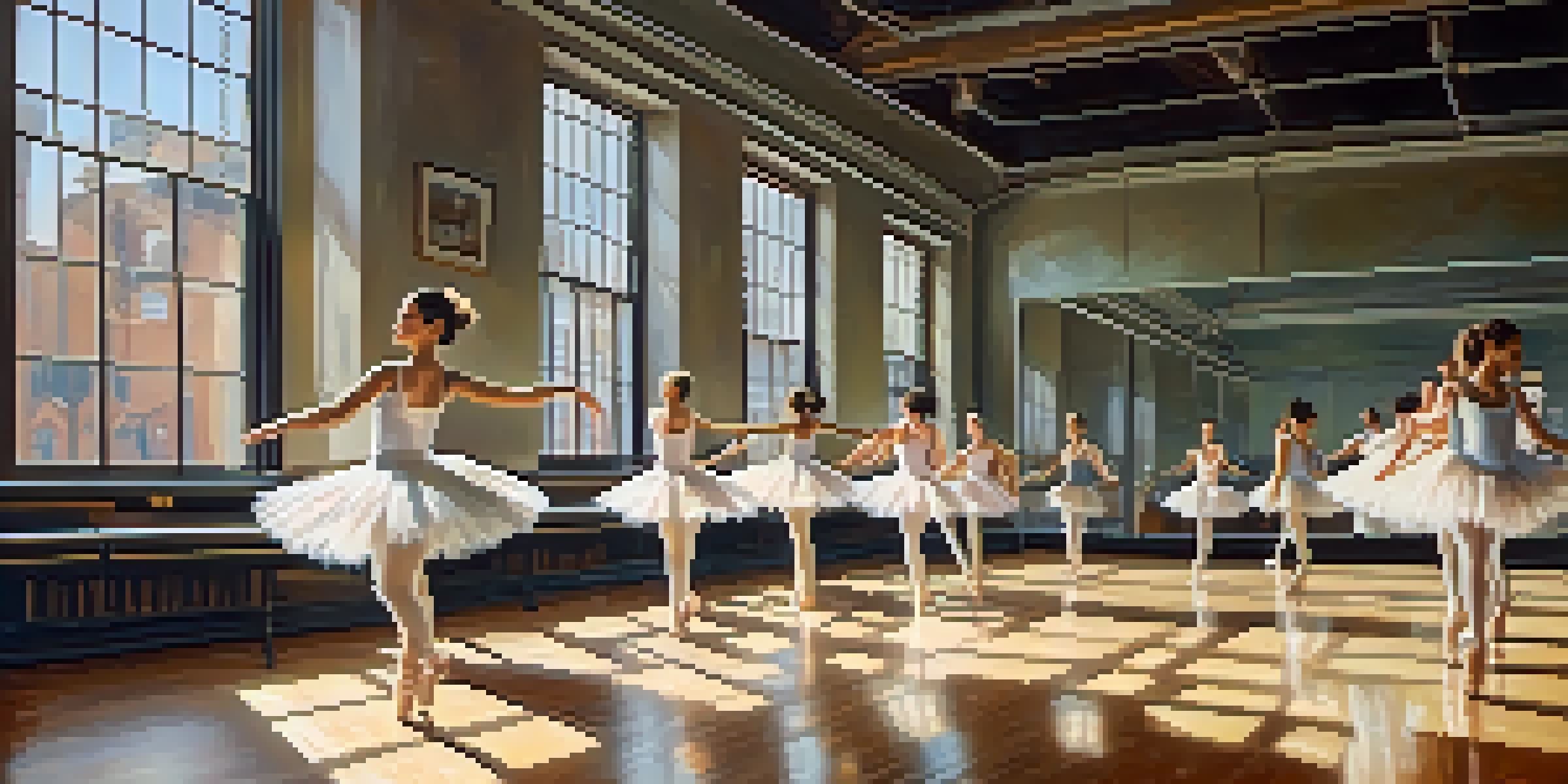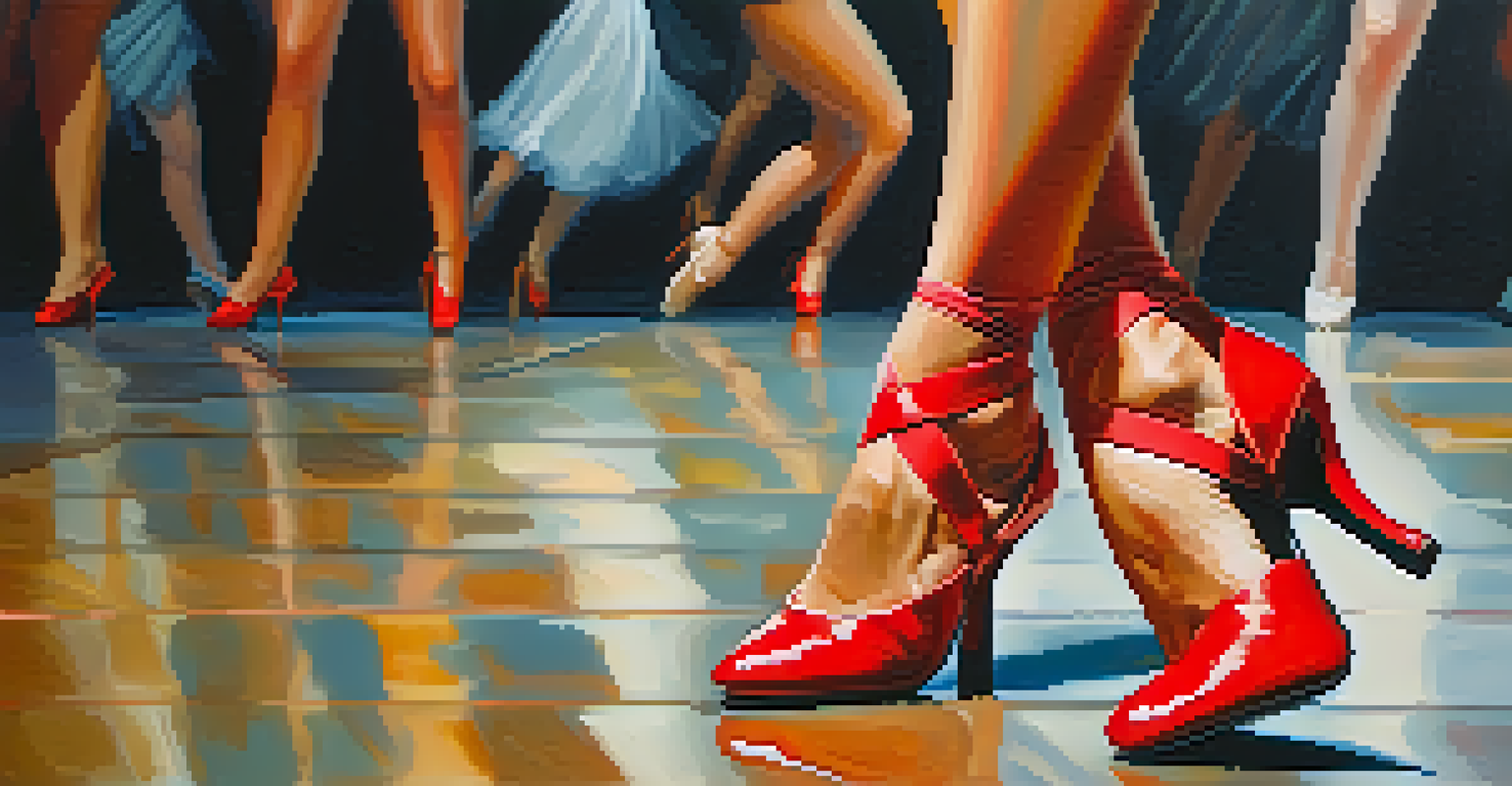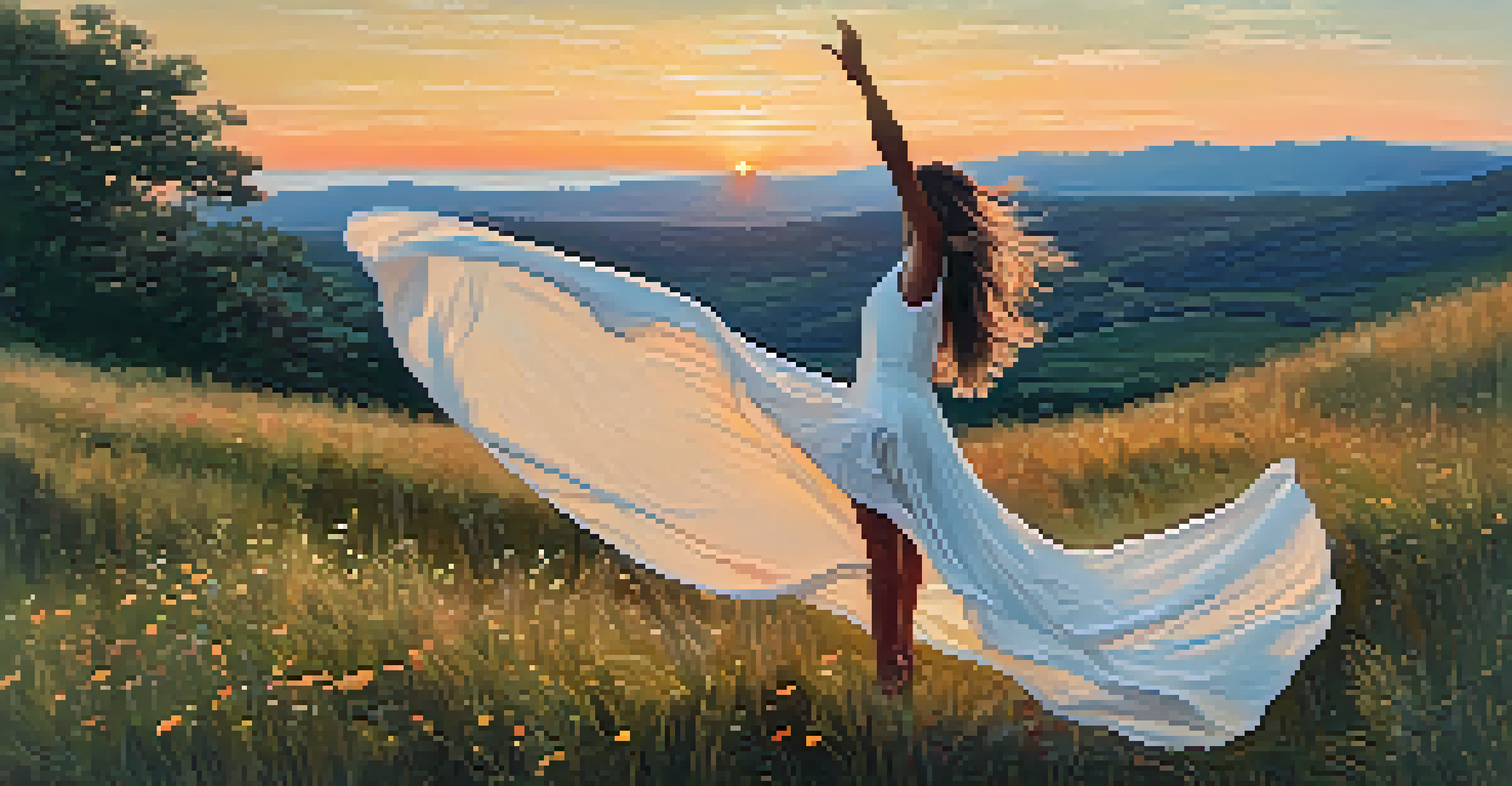Exploring Dance Genres: A Pathway to Individual Expression

Understanding the Basics of Dance Genres
Dance genres are various styles that define how movements are expressed. These styles can range from classical ballet to modern hip-hop, each with its unique characteristics. Understanding these genres is essential for dancers as it shapes their training and performance choices.
Dance is the hidden language of the soul.
Every dance genre carries a distinct history and cultural significance. For instance, ballet originates from the royal courts of Renaissance Italy, while hip-hop emerged from urban street culture in the United States. This rich diversity allows dancers to connect with different backgrounds and narratives.
Exploring various dance genres can help individuals discover what resonates with them. By experimenting with different styles, dancers can find their passion and unique voice, leading to more authentic self-expression.
The Emotional Power of Dance
Dance is not just a physical activity; it’s a powerful medium for emotional expression. Each genre evokes different feelings, from the elegance of ballet to the raw energy of street dance. This emotional connection can be therapeutic, helping individuals process their feelings creatively.

For many, dancing can serve as an outlet for joy, frustration, or even sadness. For instance, contemporary dance often explores complex themes and emotions, allowing dancers to convey their personal experiences. This aspect of dance fosters a deeper connection between the performer and the audience.
Dance Genres Shape Expression
Understanding various dance genres enriches a dancer's training and allows for authentic self-expression.
By embracing the emotional power of dance, individuals can enhance their personal expression. It’s a way to communicate feelings that words may fail to capture, making dance a unique form of storytelling.
Finding Your Unique Style Through Exploration
Exploring different dance genres allows individuals to find their unique style. Each style offers various techniques, movements, and rhythms that can inspire creativity. As dancers experiment, they learn what feels right for their bodies and personalities.
To dance is to be out of yourself. Larger, more powerful, more beautiful. This is power, it is glory on earth and it is yours for the taking.
For instance, a dancer with a classical background might find joy in the freedom of jazz dance, while a hip-hop dancer might appreciate the precision of ballet. This blending of genres can lead to innovative personal styles that reflect individual identities.
Ultimately, the journey of exploration supports individual growth. Embracing different genres helps dancers break free from limitations and discover new ways to express themselves authentically.
The Role of Technique in Dance Expression
Technique is a fundamental aspect of dance that enhances expression. Mastering the basics of a genre allows dancers to execute movements with precision and confidence. This strong foundation enables artists to push boundaries and explore their creative potential.
For example, a dancer skilled in ballet technique can incorporate its graceful lines into contemporary routines. This fusion enriches their performances, adding layers of meaning and aesthetic appeal. Technical proficiency adds depth to emotional expression.
Dance as Emotional Outlet
Dance serves as a powerful medium for emotional expression, allowing individuals to communicate feelings that words cannot.
However, while technique is vital, it should not overshadow personal creativity. The best performances balance technical skills with genuine emotion, creating a captivating experience for both the dancer and the audience.
Cultural Influences on Dance Genres
Dance genres are deeply rooted in cultural traditions and histories. Each style reflects the values, stories, and experiences of the communities from which it originates. Understanding these cultural contexts enhances a dancer's appreciation and expression within a genre.
For instance, traditional African dance often incorporates community storytelling and rituals, while flamenco showcases the passion and history of Spanish culture. These elements enrich the dance experience, allowing performers to connect more deeply with their heritage.
Engaging with a genre's cultural roots can also inspire dancers to innovate and create new expressions. By honoring tradition while exploring personal interpretations, dancers contribute to the evolving landscape of dance.
The Community Aspect of Dance Genres
Dancing is often a communal activity, fostering a sense of belonging and connection. Many dance genres thrive in group settings, whether in classes, performances, or social events. This community aspect adds another layer to individual expression, as dancers share experiences and support each other.
For example, salsa dancing is known for its vibrant social scene, where dancers engage with one another on the dance floor. This interaction not only enhances skills but also builds friendships and networks among fellow dancers.
Community Enhances Dance Journey
Being part of a dance community fosters connection and inspires personal growth through shared experiences.
Being part of a dance community can further inspire personal expression. The encouragement and collaboration within these groups can motivate individuals to explore new styles and push their creative boundaries, enriching their dance journey.
Dance as a Lifelong Journey of Expression
Dance is not just a phase; it’s a lifelong journey filled with opportunities for expression. As individuals grow, their experiences and perspectives change, influencing how they connect with dance. Each stage of life can bring new insights that enhance their expression through movement.
For instance, a dancer who begins training in childhood may find that their style evolves as they encounter new life experiences. Those changes can lead to more profound artistic expression, reflecting their personal growth and development.

Embracing dance as a lifelong journey encourages individuals to remain open to new genres and styles. This mindset creates a rich tapestry of experiences, allowing for continuous exploration and expression throughout their lives.